Car Sales
New Reasonably-Priced Cars (Commodore/Falcon Replacements)
By now you’ve probably recovered from the loss of not being able to purchase a new Falcon or Commodore in Australia. These were lovely, big, spacious cars that could travel long distances in superb comfort. So what other alternatives are there for the buyer looking for a new car with those ‘good-ol’ Commodore and Falcon traits? Well, the good news is there are some potential new vehicles for you.
I’ve had a look at some of the roomier cars with decent performance, decent comfort and reasonable pricing; and when I mean reasonable pricing I mean anywhere up to $60k. There are one-or-two vehicles on the list that are priced beyond the $60k mark, but I’ve added them because I reckon that they would still be worth considering for those of you who have a few more dollars in your back pocket. None on the list run out to much beyond $80k.
The pricing given for each vehicle should be regarded as the estimated standard model price, so if you go for the higher-end models or want more options, then you would expect that these variants will be pricier. Don’t forget to get in touch with our sales team at Private Fleet because often we can get you some great deals!

Alfa Romeo Giulia ($60,900)
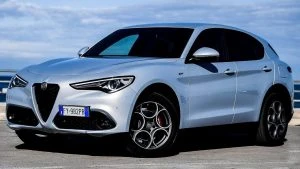
Alfa Romeo Stelvio ($65,900)
Alfa Romeo might just have a car that fixes your Commodore or Falcon withdrawal symptoms. The Giulia is a really nice drive, is quick and gets five-star safety. The Stelvio is the SUV version that’s superbly nice-looking and great to drive. These two Alfas tick all the right boxes for those who are after a great driving experience and something a bit special.

Audi A5 ($71,900)

Audi A6 ($84,900)

Audi Q5 ($66,900)
Three Audis come to mind – all of which are impeccably built, comfortable and high-tech.

BMW 3 Series ($70,900)

BMW 4 Series Coupe ($71,900)
These two Beemers are worth a look. Any of the line-up are dynamic and efficient cars to drive. They’ve just been updated with all the latest new technology. The sexiest car in this list might be the 2021 4-Series Coupe.

Chrysler 300 ($59,950)
Do try one of these! Superbly comfortable and roomy, the 2021 Chrysler 300 is loaded with luxury and style. There is heaps of smooth engine torque and plenty of performance available with the 300. A Chrysler 300 comes with the choice of a V6 or V8 petrol engine, and the pricing is outstanding, too.
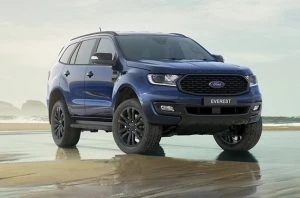
Ford Everest ($50,090)

Ford Mustang ($51,590)

Ford Ranger ($29,190)
Three Fords might do it for you. The Mustang has loads of performance available, but it is a bit tight on rear seat space. The Ranger is a comfortable ute that doubles as a workhorse. The Everest is an SUV Ranger, and is lovely to drive long distance with the family and gear on-board. The Ranger and Everest boast five-star safety, 4×4 capability and come with all the latest technology.
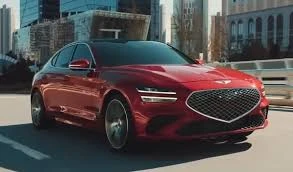
Genesis G70 ($59,300)

Genesis G80 ($68,900)
Here are two very underrated cars, or perhaps just not so well known. The G70 and G80 are smooth, luxury cars built by Hyundai, and come with gobs of style, refinement and high-tech features. They are also superb at covering long distances quickly. Nice lookers, too!

Haval H9 ($40,990)
Thought I’d throw the new Haval H9 into the mix. It’s a stylish, spacious, big SUV that’s loaded, safe and comfortable to drive. Check out the price!

Honda Accord ($51,990)
Honda might be able to tempt you into the fold with their new Accord. There are few spacious FWD sedans that can do everything as nicely as an Accord. Comfort, new technology, new features and reliability go hand-in-hand at Honda.
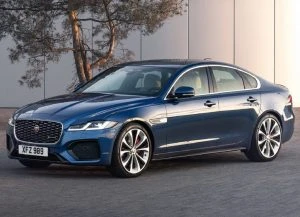
Jaguar XE ($65,670)
It might be a bit small for some, but the Jaguar XE is a pleasant drive.

Jeep Grand Cherokee ($59,950)
Ride high in a well-priced Jeep that can head off-road, is big on space and can cosset you in luxury.
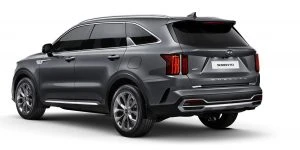
Kia Sorento ($45,850)

Kia Stinger ($49,550)
Kia has these two models that are as different from each other as chalk and cheese. However, they are roomy, good performers and are packed with up-to-date features as standard. The pricing is excellent, and the Stinger goes like a stabbed rat!

Land Rover Discovery Sport ($65,700)
This new Landie might be the right option for you. 4×4 capability, loaded with kit and stylish.

Lexus ES 300h ($62,525)
Lexus GS 300 ($74,838)
Lexus IS 300 ($61,500)
Lexus IS 300h ($64,500)
Lexus IS 350 ($66,500)
Lexus NX 300 ($57,500)
Lexus NX 300h ($60,500)

Lexus RC 300 ($67,990)
Lexus RC 350 ($70,736)
I can count nine Lexus vehicles which might be the right fit for you. Each variant is different, so there is a high chance that one of these will meet your requirements. Lexus vehicles are high-end Toyotas with excellent reliability, performance, luxury and style. Five-star safety comes with each of these machines, while the RC is a quick performer. Hybrid versions are extremely efficient. The NX is an SUV-type vehicle.
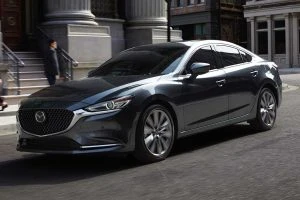
Mazda 6 ($34,490)
Mazda BT-50 ($36,550)
Mazda CX-8 ($39,910)

Mazda CX-9 ($45,990)
Aussie people seem to like Mazdas, and one of these four versions might appeal to you. Mazda vehicles are well-priced, safe, comfortable and reliable performers. The CX-9 is very roomy, and the 6 comes with sedan and wagon variants.
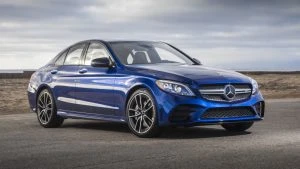
Mercedes-Benz C-Class ($66,300)
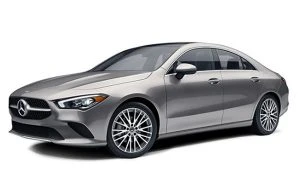
Mercedes-Benz CLA ($62,600)
Owning a new Merc doesn’t come cheap, so I’ve added just the C-Class and CLA as an alternative. These 2 classy cars are excellent to drive, comfortable and safe. They might be a bit small, however.
Mitsubishi Pajero ($54,490)

Mitsubishi Pajero Sport ($46,990)
Don’t forget the Pajero! The latest version is very good at touring long distances, great for towing, spacious and a 4×4 king. All the latest technology is on-board one of these. Again, the pricing is first-rate.

Nissan Pathfinder ($44,240)
Check out the classy new Nissan Pathfinder. It has plenty of space for the family, has five-star safety and it rides nicely on and off the road.

Peugeot 508 ($57,490)
Peugeot 5008 ($51,990)
Two classy Peugeot variants are well worth a look. The new 508 and 5008 are very stylish and safe, and they are possibly some of the nicest cars to look at on this short list (that’s quite long). Seating is spacious and comfortable, and the technology and features are all up-to-the-minute. They cover the ground effortlessly and efficiently, and they are priced very well for what they offer.
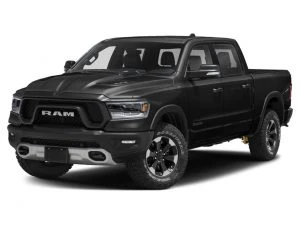
RAM 1500 ($79,950)
I thought I’d add the highly rated RAM 1500. “NZ Four Wheel Drive” magazine has classed this as the best ute for 2021. 4×4 action is a breeze in one of these tough yet comfortable machines, and space is abundant inside the cabin and out on the deck.
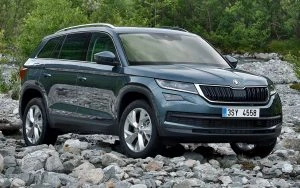
Skoda Kodiaq ($46,390)
The Kodiaq is one of the most practical vehicles you can buy. Off-road ability, space and comfort are all part of the Kodiaq’s repertoire. It also boasts one of the biggest boots.
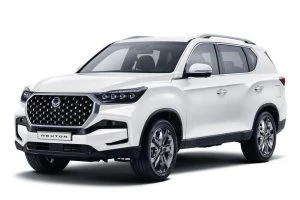
Ssangyong Rexton ($39,990)
Ssangyong’s are tough, reliable and practical. The Rexton is the latest SUV 4×4 variant that has all the latest new technology, comfort and space you’ll need. Pricing is excellent and the styling looks pretty good, especially with big alloys and fat rubber.

Subaru Levorg ($37,240)
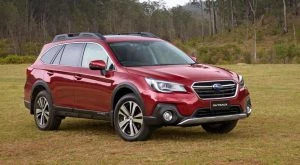
Subaru Outback 3.6R.
Subaru Outback ($37,440)
How about the Levorg or Outback wagons? Safety, AWD, reliability and practicality are all found inside one of these. There are also some quick versions of these, as well.
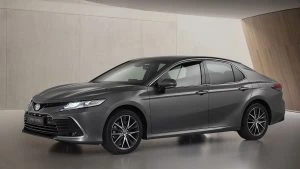
Toyota Camry ($28,990)
This is one of the cheapest cars on the list that starts out at under $30k. A new Camry is very modern, practical, efficient, safe and reliable. What more could you want?
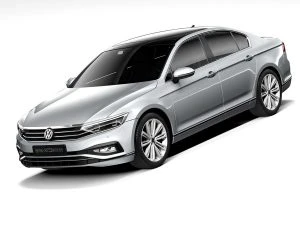
Volkswagen Passat ($46,590)
VW has the Passat. Essentially it’s the European version of the Toyota Camry. These are nice to drive, a bit more luxurious and great on style. Here is a good practical car.

Volvo S60 ($55,990)
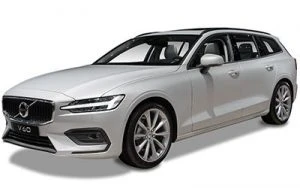
Volvo V60 ($57,990)

Volvo XC60 ($64,990)
Three Volvos slot into the price bracket range that I’ve been looking for – each a bit different from the other – but all built on Volvo’s latest 60 platform. They are very modern, very stylish, very comfortable and very safe. The Volvo XC60 has AWD and some handy off-road ability, while the V60 is a classy wagon. The S60 is the sedan version. Performance models come with hybrid technology, and all are great long-distance tourers.
2021 Kia Stonic Readies For Release.
Kia’s curiously named Stonic is being advertised on Australian TV for sale. The brand’s answer to the Kona, Stonic will have sharp pricing, a choice of three models (Stonic S, Sport, and Stonic GT-Line) with sub-2.0L engines, and a seven speed DCT for the GT-Line. The base model has a six speed manual or auto. Pricing starts from $22,990 for the Stonic S in manual guise, with a $1,000 premium for the auto. Sport starts at $24,990 and $25,990 for manual and auto, with GT-Line from $29,990. All prices are drive-away.
Pricing starts from $22,990 for the Stonic S in manual guise, with a $1,000 premium for the auto. Sport starts at $24,990 and $25,990 for manual and auto, with GT-Line from $29,990. All prices are drive-away.
The engines are a 1.4L non-turbo four, or a 1.0L three cylinder. Power and torque figures are 74kW and 133Nm for the four, 74kW and 172Nm for the turbo three. It’s front wheel drive for the four cylinder, AWD for the turbo three potter.
The standard equipment for the S includes six airbags, car/pedestrian/cyclist detection AEB, Lane Following Assist, reversing camera with dynamic parking guidelines, rear parking sensors, driver attention alert, cruise control, idle stop and go (also in Sport), wireless Apple Carplay and Android Auto (S trim only), multi-connection Bluetooth, 8-inch Multimedia touchscreen, 6-speaker sound system, 4.2-inch TFT LCD driver’s cluster, 15-inch steel wheels and auto headlights.
Step up to the Sport and there is 17-inch alloy wheels, smart key with push button start, 8-inch multimedia touchscreen with navigation, 10-year Mapcare updates with SUNA Traffic, electric folding mirrors and premium steering wheel and shifter. GT-Line adds in 17 inch alloys, idle-stop-and-go, a bespoke body package, MFR LED headlights, two tone colour or a sunroof, cloth and artificial leather seats, climate control air conditioning, privacy glass, and an electrochromic mirror.
GT-Line adds in 17 inch alloys, idle-stop-and-go, a bespoke body package, MFR LED headlights, two tone colour or a sunroof, cloth and artificial leather seats, climate control air conditioning, privacy glass, and an electrochromic mirror.
Exterior colour choices are broad. There will be seven available for the 1.4L version, with Clear White, Silky Silver, Perennial Grey, Aurora Black Pearl, Signal Red, Mighty Yellow, and Sport Blue. The GT-Line has a choice of four exclusive two-tone treatments. There is Clear white with an Aurora Black Pearl roof, Mighty Yellow and Aurora Black Pearl roof, Sporty Blue with Aura Black Pearl Roof, and Signal Red with Aurora Black Pearl Roof. Silky Silver is not available on GT-Line. Premium paints have a $520 impost.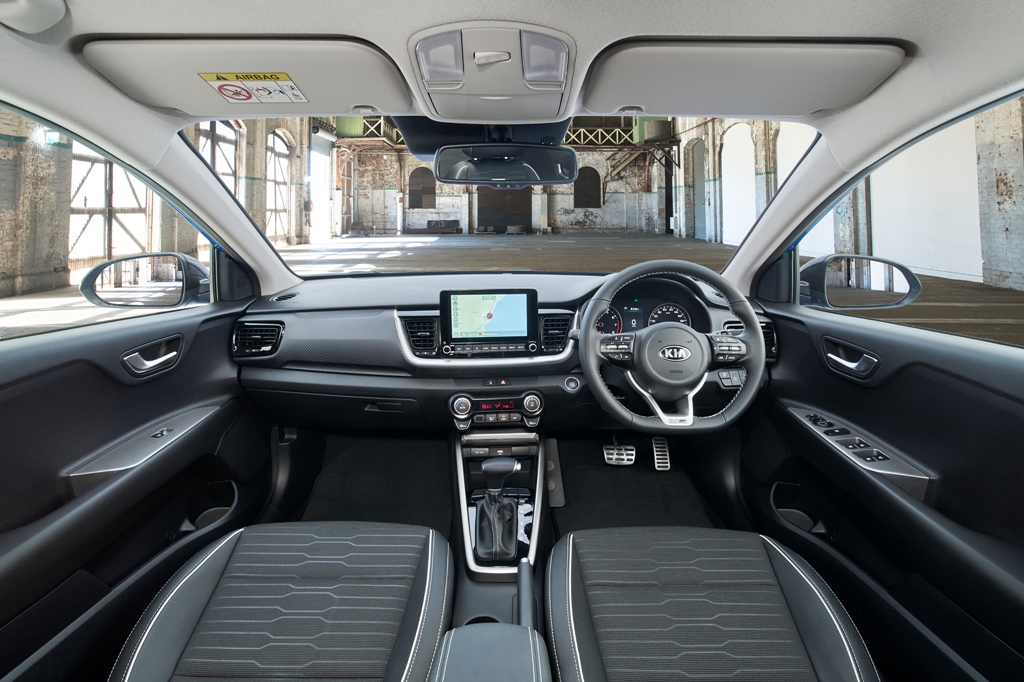
 Based on the Rio’s platform, the Stonic has had the gearbox moved forward by 28mm, and their is an increase of caster angle from 4.1 degrees to 4.6 degrees, Shock absorbers have been specified as the high performance RS-valve types. the rear shocks have been given a more upright stance, with 8.4 degrees off vertical, whilst Rio has 25 degrees.
Based on the Rio’s platform, the Stonic has had the gearbox moved forward by 28mm, and their is an increase of caster angle from 4.1 degrees to 4.6 degrees, Shock absorbers have been specified as the high performance RS-valve types. the rear shocks have been given a more upright stance, with 8.4 degrees off vertical, whilst Rio has 25 degrees.
Interior features include dual channel Bluetooth for two phones to connect for music streaming. The S has wireless connection for Apple CarPlay and Android Auto via the 8.0 inch however it’s not available on the Sport and GT-Line trims. Satnav has a 10-year Mapcare and SUNA traffic services support included.
Safety is high, of course, with camera and radar AEB across the three, with car, pedestrian, and cyclist recognition across an activation spread ranging from 5km/h to 180km/h for vehicles and 5km/h to 85km/h for pedestrian and cyclists. DAA or Driver Attention Alert is standard, along with Lane Keep Assist and Lane Following Assist. Parking Distance Warning connects to the rear sensors to monitor and alert for objects around the vehicle when reversing whilst the Rear Occupant Alert is a class leading inclusion which monitors rear door opening and closing to assist the driver about rear seat passengers when exiting the vehicle. Packaging has the Stonic at a length of 4140mm, width of 1760mm, height with roof racks 1520mm, wheelbase of 2580mm and minimum ground clearance of 165mm in S trim and 183mm for Sport and GT-Line, a maximum of 1,155L for the cargo, whilst towing is up to 1,000kg braked with the manual.
Packaging has the Stonic at a length of 4140mm, width of 1760mm, height with roof racks 1520mm, wheelbase of 2580mm and minimum ground clearance of 165mm in S trim and 183mm for Sport and GT-Line, a maximum of 1,155L for the cargo, whilst towing is up to 1,000kg braked with the manual.
Check with your Kia dealer for a test drive.
Stellantis: One New Name, A New Home For Many
Stellantis. It’s the umbrella name for the coming together of two major automotive groups, the Peugeot and Citroen Alliance, and the Fiat Chrysler conglomerate. There are brands as diverse as Opel to Maserati, Citroen’s DS to Vauxhall, and there is already murmurs of upgrades to vehicles produced by companies now joined as one.
The full list, Chrysler, Dodge, Jeep, Ram, Fiat, Alfa Romeo, Abarth, Lancia, and Maserati from FCA, and Citroën, DS, Opel, Peugeot, and Vauxhall from to PSA means that there is over 120 years of automotive history brought together. And collectively, there are now over 400,000 personnel with that collective pool of experience and knowledge.
John Elkann is the Chairman of the Stellantis board, and says: “It is no coincidence that Stellantis is born precisely when our world requires a new kind of automotive company that will champion clean and intelligent solutions to provide freedom of movement for all. Our global scale and reach provide us with the resources to invest in state-of-the-art technologies, distinctive excellence and unmatched choice for our customers.
But it is the geographic and cultural diversity of Stellantis’ people that from Day One is our greatest competitive advantage. It is they, with their energy, their knowhow and their constant commitment who make Stellantis what it is today. And it is they who day-by-day will build an even greater company for this new era of mobility.” Echoing his words is the new Chief Executive Officer, Carlos Tavares, with: “This is a great day. One year after we announced this project, Stellantis is born, notwithstanding the unprecedented societal and economic disruption caused by the COVID-19 pandemic. I want to warmly thank all of the teams who made this possible and also thank the entire workforce who continued to move our operations forward during this exceptional year.
Echoing his words is the new Chief Executive Officer, Carlos Tavares, with: “This is a great day. One year after we announced this project, Stellantis is born, notwithstanding the unprecedented societal and economic disruption caused by the COVID-19 pandemic. I want to warmly thank all of the teams who made this possible and also thank the entire workforce who continued to move our operations forward during this exceptional year.
This demonstrates the agility, creativity and adaptability of our company which aims to be great rather than big, determined to be much more than the sum of its parts. It is also a further signal of the new company’s determination to be a leading player in the automotive industry in this ever changing environment. Stellantis is dedicated to “pursuing greatness” and enhancing the well-being of its employees.”
The group’s spread reaches to over 130 countries, and the brands cover the full spectrum of market segments from luxury, premium and mainstream passenger vehicles to hard-charging pickup trucks, SUVs and light commercial vehicles, as well as dedicated mobility, finance and parts and service brands. This new group now expects to leverage its size and economies of scale to invest in innovative mobility solutions for its global customer base. Forward estimates see Stellantis looking at a revenue base of over five billion Euro in a synergystic way of spreading the brands.
Achieving that revenue will come from a streamliniung of processes, including how purchasing is conducted, the crossover of drivetrains and platforms, and an amortisation of Research and Development. Currently, that estimate also comes from not closing any production plants. To ensure that all departments flow smoothly, including company-wide performance & strategy, planning, regions, manufacturing, brand and styling, there will be nine Governance Committees.
2021 Hyundai i30 Elite v 2021 Toyota Corolla Ascent Sport: Private Fleet Car Review
 This Car Review Is About: The two cars, in hatchback form, that dominate the market for their sector. We were lucky enough to have the 2021 Toyota Corolla Ascent Sport and 2021 Hyundai i30 Elite side by side. Five door bodies, automatics, revvy four cylinder engines, and decent tech for the average family are hallmarks of both.
This Car Review Is About: The two cars, in hatchback form, that dominate the market for their sector. We were lucky enough to have the 2021 Toyota Corolla Ascent Sport and 2021 Hyundai i30 Elite side by side. Five door bodies, automatics, revvy four cylinder engines, and decent tech for the average family are hallmarks of both.  However, one of the two is not like the other, in that the i30 range was given a refresh late in 2020, with the sedan now replacing the Elantra, with Toyota’s offering always having a sedan available.
However, one of the two is not like the other, in that the i30 range was given a refresh late in 2020, with the sedan now replacing the Elantra, with Toyota’s offering always having a sedan available.
We back-to-back the pair in a not quite but close apples for apples comparison. The Elite is close to the top of the i30 range, the Ascent Sport is the entry level to a three tier range from Toyota.
How Much Do They Cost?: In basic Glacier White and auto form the Ascent Sport starts from $29,380 with metallics a no cost option but $500 on SX and ZR. For our location, Hyundai’s website priced the i30 Elite auto at $33,830 in Polar White. Clad in Intense Blue, as was our test car, that goes to $34,340. Both cars are on a drive-away price schedule. Under The Bonnet Is: A 2.0L GDI (Gasoline Direct Injection) engine for the contender in the Korean corner, and a same sized engine for the Japanese contender. The Hyundai runs a traditional torque converter auto with six ratios, the Toyota a CVT with ten preprogrammed steps. Both drive the front wheels and each have manual shifting. Power for the Korean is 120kW and peak torque is 203Nm, with 6,200rpm and 4,700rpm the required figures. Corolla has 125kW and 200Nm, however Toyota don’t appear to list the rev points.
Under The Bonnet Is: A 2.0L GDI (Gasoline Direct Injection) engine for the contender in the Korean corner, and a same sized engine for the Japanese contender. The Hyundai runs a traditional torque converter auto with six ratios, the Toyota a CVT with ten preprogrammed steps. Both drive the front wheels and each have manual shifting. Power for the Korean is 120kW and peak torque is 203Nm, with 6,200rpm and 4,700rpm the required figures. Corolla has 125kW and 200Nm, however Toyota don’t appear to list the rev points. The i30’s overall economy finished on a creditable 7.2L/100km. We saw a best of 6.0L/100km, a very good figure considering it was loaded with four passengers and a reasonable amount of boot space filled. Corolla’s average hovered between 6.0L to 6.5L per 100km in a more urban oriented drive. Tank for the Ascent Sport is 50.0L, matched by the i30. Both are 91RON and E10 compatible.
The i30’s overall economy finished on a creditable 7.2L/100km. We saw a best of 6.0L/100km, a very good figure considering it was loaded with four passengers and a reasonable amount of boot space filled. Corolla’s average hovered between 6.0L to 6.5L per 100km in a more urban oriented drive. Tank for the Ascent Sport is 50.0L, matched by the i30. Both are 91RON and E10 compatible.
On The Inside It’s: Black leather for the i30, with perforated squabs but no venting nor heating. The Ascent Sport has black cloth as befits an entry level vehicle. Both have DAB audio and a point of difference here. The Toyota’s layout is simple and intuitive barring the fact it’s a black and white 8.0 inch screen. The Corolla has voice recognition, a bonus at an entry level. It’s much easier to use whereas the Hyundai’s updated screen, even with the appeal of colour and in the Elite it’s 10.25 inches, isn’t as intuitive. We also found the sensitivity of the Korean’s tuner to be less than the Corolla’s. Ascent Sport has satnav as an option and includes a USB port in Ascent Sport trim. Smart apps are standard in both.
It’s much easier to use whereas the Hyundai’s updated screen, even with the appeal of colour and in the Elite it’s 10.25 inches, isn’t as intuitive. We also found the sensitivity of the Korean’s tuner to be less than the Corolla’s. Ascent Sport has satnav as an option and includes a USB port in Ascent Sport trim. Smart apps are standard in both. The dash design for each stamps their mark; the Corolla’s has barely changed in some years and features the somewhat heavy and intrusive triple wave design that intrudes into the kneespace of driver and passenger. The Hyundai’s design has space between the plastic and the knees and in the i30 it’s a simple, single line from side to side that incorporates the piano black surrounds for the aircon. The Hyundai’s gear selector feels it has a shorter throw and the springing in the Corolla isn’t as tight as the Elite’s.
The dash design for each stamps their mark; the Corolla’s has barely changed in some years and features the somewhat heavy and intrusive triple wave design that intrudes into the kneespace of driver and passenger. The Hyundai’s design has space between the plastic and the knees and in the i30 it’s a simple, single line from side to side that incorporates the piano black surrounds for the aircon. The Hyundai’s gear selector feels it has a shorter throw and the springing in the Corolla isn’t as tight as the Elite’s. Both have auto, dusk sensing headlights, with the Elite’s higher spec level adding in rain sensing wipers. It’s a key start for the Ascent Sport, push button for the i30. The Elite also has a 12V socket up front with a wireless charging pad. The Corolla’s dash display has the speedo front and centre, with the full colour 4.3inch info screen on far right. The Elite has a full colour TFT 7.0 inch display, shared across all models.
Both have auto, dusk sensing headlights, with the Elite’s higher spec level adding in rain sensing wipers. It’s a key start for the Ascent Sport, push button for the i30. The Elite also has a 12V socket up front with a wireless charging pad. The Corolla’s dash display has the speedo front and centre, with the full colour 4.3inch info screen on far right. The Elite has a full colour TFT 7.0 inch display, shared across all models. One notable difference between the two is the Corolla’s much discussed cargo section. It’s not a high loading lip however the cargo section’s floor is level with it, and underneath is the spare wheel and associated equipment. The i30’s floor is below the lip and seems further from the rear seats too, making for a more family friendly usage.
One notable difference between the two is the Corolla’s much discussed cargo section. It’s not a high loading lip however the cargo section’s floor is level with it, and underneath is the spare wheel and associated equipment. The i30’s floor is below the lip and seems further from the rear seats too, making for a more family friendly usage. Also, the i30’s boot area is home to the bass driver for the audio system. The Corolla has 217L to 333L, a figure much commented on since the revamps, with the Hyundai starting from 395L and moving to 1,301L with the second row folded. Both have a full sized spare.
Also, the i30’s boot area is home to the bass driver for the audio system. The Corolla has 217L to 333L, a figure much commented on since the revamps, with the Hyundai starting from 395L and moving to 1,301L with the second row folded. Both have a full sized spare. 994mm and 977mm are the head room front and rear measurements for the i30, 1073mm and 883mm leg room, with 1,427mm and 1,406mm shoulder room. The Toyota spec sheet doesn’t list them.
994mm and 977mm are the head room front and rear measurements for the i30, 1073mm and 883mm leg room, with 1,427mm and 1,406mm shoulder room. The Toyota spec sheet doesn’t list them.
On The Outside It’s: A mild but noticeable update for the i30. Up front is a set of driving lights that have have expanded from a simple strip of LEDs to a more assertive looking set of triangular LEDs that fill out the insert, and double as indicators. The grille has morphed and moved to a broader design, and has a more flamboyant fan shaped styling. The rear lights have a slight restyle to match the very mild changes to the front lights.
Corolla was given its own do-over in 2018. It’s broader, sharper edged, and lower than the more bluff and upright standing i30. The flanks are more organic, curved, than the straight sides of the i30, and the rear has a more pronounced slope than its Korean counterpart. The LED DRLs are far more inboard and set inside the narrow headlight cluster. There’s notable differences between these two however there are similarities to other brands. The VW Golf is more akin to the squat and bluff i30, Subaru’s laid back Impreza hatch is closer to the Corolla.
There’s notable differences between these two however there are similarities to other brands. The VW Golf is more akin to the squat and bluff i30, Subaru’s laid back Impreza hatch is closer to the Corolla.
i30’s length is 4,340mm, and stands 1,455mm tall. Width is 1,795mm and wheelbase is a decent 2,650mm. Corolla is 4375mm in length, with a 2640mm wheelbase. Height and width are 1,435mm and 1,790mm.
On The Road It’s: A definite difference in feeling. The Corolla’s steering is light in comparison to the i30 Elite’s but it’s also more twitchy. The Hyundai has some real weight, and it’s subtly but noticeably more front wheel drive. The lightness of the Ascent Sport means one can comfortably pootle around town with only one hand on the tiller but that twitchiness then demands both hands be in contact. The i30’s has a need for both, particularly because of the over-enthusiastic lane keep assist function. The Corolla’s is noticeable but nowhere near as “grabby”, a complaint well recognised about the Korean. The i30’s suspension is more sporting in tune, with the 225/45/17 Hankook Ventus Prime rubber gripping hard and well, and providing a little bit of absorption from the smaller sidewalls. The Ascent Sport has 205/55/16s from Dunlop’s Enasave range and the higher sideall is certainly noticeable in ride absorption. It also flexes just enough to put a bit of Sport into the Ascent Sport name. Highway and freeway ride quality certainly had the Ascent Sport in a slightly more wallowly mood, not quite as tied down nor quick to dampen, as the i30. In contrast, the i30 was a bit more bang thump.
The i30’s suspension is more sporting in tune, with the 225/45/17 Hankook Ventus Prime rubber gripping hard and well, and providing a little bit of absorption from the smaller sidewalls. The Ascent Sport has 205/55/16s from Dunlop’s Enasave range and the higher sideall is certainly noticeable in ride absorption. It also flexes just enough to put a bit of Sport into the Ascent Sport name. Highway and freeway ride quality certainly had the Ascent Sport in a slightly more wallowly mood, not quite as tied down nor quick to dampen, as the i30. In contrast, the i30 was a bit more bang thump. The i30 had a minor glitch in the engine under load. On the flat and and on uphill acceleration, there was a momentary “pinging”, a stutter in the otherwise smooth pull of the 2.0L. It has to be noted that we’ve not experienced anything like this in a modern car and Hyundai’s garage was made aware of it. The auto is smooth in changing and the electronics work with the throttle input and engine’s revs perfectly. Using the manual shift option makes fractionally quicker changes.
The i30 had a minor glitch in the engine under load. On the flat and and on uphill acceleration, there was a momentary “pinging”, a stutter in the otherwise smooth pull of the 2.0L. It has to be noted that we’ve not experienced anything like this in a modern car and Hyundai’s garage was made aware of it. The auto is smooth in changing and the electronics work with the throttle input and engine’s revs perfectly. Using the manual shift option makes fractionally quicker changes. For the CVT in the Ascent Sport, if a quick getaway is the required situation, manual shifting works wonders. There’s minor “slurring” on the changes but it’s preferable to the unenergetic normal sensation from the CVT on gentle to medium acceleration. A harder and heavier pedal extracts more from the 2.0L and CVT and even brings in mild torque-steer.
For the CVT in the Ascent Sport, if a quick getaway is the required situation, manual shifting works wonders. There’s minor “slurring” on the changes but it’s preferable to the unenergetic normal sensation from the CVT on gentle to medium acceleration. A harder and heavier pedal extracts more from the 2.0L and CVT and even brings in mild torque-steer.
Braking in both is courtesy of well balanced, well modulated, discs front and rear. The pedal in the i30 has a heavier feel and in context matches the steering. The Corolla’s is lighter but not without feel. It’s also slightly quicker in the ratio, but not by much.
What About Safety?: Hyundai doesn’t skimp on the i30, with Blind Spot Collision, Rear Cross Traffic Alert, and Safe Exit warning missing only from the base i30 and Active. Otherwise the Safety Sense package adds in Driver Attention Warning, Forward Collision-Avoidance Assist (FCA) – City/Urban/Interurban/Pedestrian/Cyclist (camera & radar), Lane Following Assist and Lane Keeping Assist-Line.
Corolla matches this with Lane Trace Assist for the CVT equipped Ascent Sport, Lane Departure Alert with Steering Assist, and Pre-Collision Safety system with pedestrian (day and night) and cyclist (day) detection plus Road Sign Assist. Blind Spot Monitor and Rear Cross Traffic, like an entry level i30, is missing in the Ascent Sport. Both load up seven airbags including a kneebag for the driver.
What About Warranty And Service?: Toyota has a VIN based service structure online. Warranty is five years and unlimited kilometres. That’s the same for the i30 and Hyundai also uses a VIN based service quote system.
At The End Of The Drive. In honesty, there really isn’t a lot between them, even looking at putting the SX in the place of the Ascent Sport. It would be convenience factors such as the charge pad perhaps, the extra clearance of the dash in the i30 over the Corolla’s design, and the brilliant screen for the driver in the i30 against the slightly better economy in the Corolla and the more user friendly interface on the touchscreen. The driving experience is a user dependent one; for us the i30’s ride tune was preferable, however there is no doubt that the softer and more comfortable tune of the Corolla Ascent Sport has its adherents. There’s also that legendary Toyota sense of being bullet-proof and infallible. In essence, the gap isn’t as big as it could have been.
The driving experience is a user dependent one; for us the i30’s ride tune was preferable, however there is no doubt that the softer and more comfortable tune of the Corolla Ascent Sport has its adherents. There’s also that legendary Toyota sense of being bullet-proof and infallible. In essence, the gap isn’t as big as it could have been.